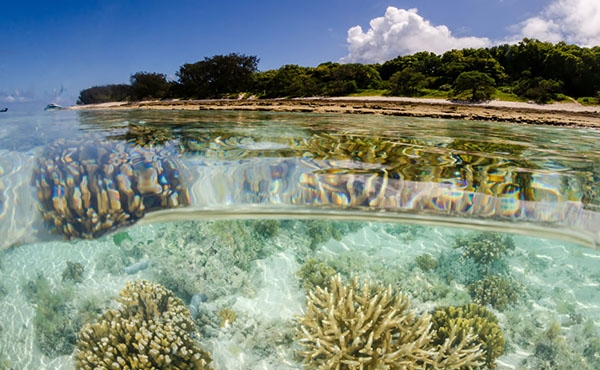Introduced species are non-native plants and animals that have been introduced and established beyond their natural range, either intentionally or accidentally as a result of human activities.1025 Species that threaten biological diversity in their new location are considered invasive (or pest) species.1026 Many invasive species can also affect cultural, health and economic values where they establish.1026
More than 250 non-native marine species have been introduced to Australia,1027 although this is likely to be an underestimate as cryptic species often go undetected.1028 Introduced terrestrial and freshwater species also occur within the Catchment.1029 Range shifts are not typically considered within the definition of species introductions, even when caused by climate change,1026 although in some cases they can cause similar impacts.1030
Invasive species can increase competition for food and space, modify habitats and affect food chains, in some cases preying directly on native species.1026,1031 Within the Region, for example, marine turtle eggs are preyed on by feral pigs at some nesting beaches,443 and seabird eggs and hatchlings are vulnerable to predation by non-native rodents.1032,1033
Since 2019, 2 new marine non-native species have been identified within the Region. In December 2022, the white colonial sea squirt was detected for the first time on tourism infrastructure within reef habitat in the Great Barrier Reef Marine Park. It has been known to exist in major Queensland ports for at least 5 years 1034 and for at least 10 years in other Australian jurisdictions. This detection was self-reported by a tourism operator at Moore Reef, offshore from Cairns. While invasive marine pests are the responsibility of the Commonwealth Department of Agriculture, Fisheries and Forestry and the Queensland Department of Agriculture and Fisheries, the Reef Authority has a role in managing impacts to Marine Park values. The Reef Authority established an incident management team, which has been working with partnered agencies, tourism operators and Gunggandji Traditional Owners to establish the nature and extent of the outbreak at Moore Reef, which in turn will guide a management response. Complete eradication of the species is considered infeasible due to its rapid growth and high reproductive capacity.1034
Since 2019, the black scar oyster has been detected in various locations, including Mission Beach, Mourilyan Harbour, Cairns, Port Douglas, Cooktown and Elim Beach.1035,1036 This species had not previously been detected in Australia, and its status and invasiveness are still being investigated. Incursions of Asian green mussel have also been detected within the Region (Escape River, 2019; Cairns, 2021) and on a number of transiting vessels, but no populations are known to have become established in the environment.1037
Pathways for introducing marine non-native species include biofouling on vessel hulls, internal seawater inlets and marine equipment, transport of larval stages within ship ballast water, and movement of aquaculture equipment and stock.1031,1038,1039 Pathway management is considered the most effective option for managing biological invasions in marine systems,1039 in which eradication and control are challenging and have often proved unsuccessful in the past.1039


